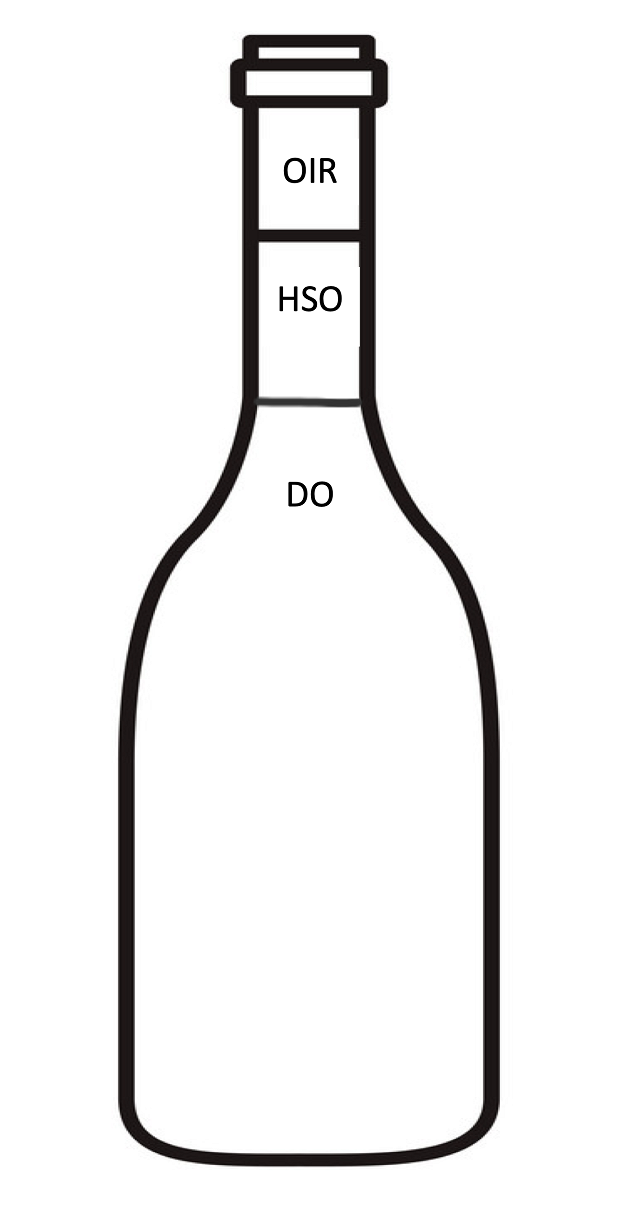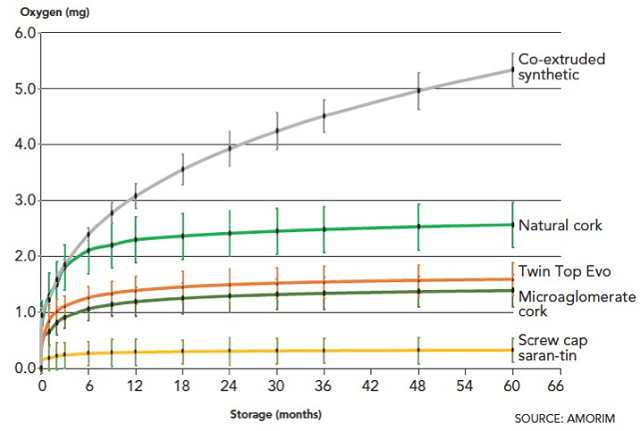Introduction
Cork was one of the first living things observed under a microscope. The regulated structure of small compartments reminded Robert Hooke of the rooms, called cells, occupied by monks in the monastery. This is how cells, the smallest unit of life, got their name.
Cork has been the predominant wine closure for hundreds of years1,2. This material has many properties that make it a great way to seal a glass wine bottle, including its ability to contract enough to be inserted into a bottle, while quickly expanding to form a seal between the cork and the glass. Unfortunately, as a natural product, it is also sometimes inconsistent, and carries the risk of various taints. Issues with manufacturing practices in the mid 20th century2 increased these risks, opening up market opportunities for alternative closures. A full discussion of the history, pros and cons of different wine bottle closures is beyond the scope of this review, but Table 1 gives a brief summary of some practical considerations when choosing which cork to use.
Table 1: Several different closure types are currently used to seal commercial wine bottles. Each has its benefits and drawbacks.

Changes in wine aromatics during aging
Each types of wine closure has the ability to seal the bottle without leaking. Beyond that, closures can have several effects on the chemical changes in wine during aging that have profound impacts on its sensory characteristics. When considering wine aging in bottle, the primary mechanisms of change are oxidation, adsorption onto the closure and desorption from the closure.
Oxidation of wine in the bottle depends on the total package oxygen at the time of bottling, as well as the oxygen transfer rate through the closures. Oxidation reactions will occur faster with higher concentrations of oxygen, warmer storage temperatures, and if light is present3. Metal catalysts such as iron in the wine will also speed up oxidation reactions3.
There are many detrimental effects of oxidation in wine. Oxidation of varietal thiols can quench the sweet citrus and boxwood notes of Sauvignon Blanc and Rosé as well as berry flavors of red varieties4. Oxidation can also alter the expression of fruity/flower esters and bring on “grilled” characteristics to the wine3,4. Some C13 norisoprenoids such as Beta damascone and alpha ionone are also decreased with oxidation4. Oxidation can lead to loss of phenolics and browning3, lower free SO2, and increased acetaldehyde (bruised apple)4.
Not all oxidation of wine is bad, however. A little bit of oxygen during bottle aging can lead to reduction in H2S, methanethiol, and thioacetates4 that can form a “reductive mask” that diminishes perception of other aromatics5. Beta damascone, a fruit enhancer, is often bound by SO2 and rendered odorless. A bit of oxygen will coax the SO2 from the Beta damascone, resulting in greater expression of fruity esters. Oxygen is also needed for the formation of TDN, the compound that brings petrol to aged Riesling, from its precursors5.
During bottle aging, odor active compounds can adsorb onto the closure itself. (Adsorption is the adhesion of particles onto the surface of a substance.) Synthetic closures are more prone to adsorption than natural corks, while none of these effects has been reported for screwcap closures. Though normally blamed for desorption of TCA (more on that later), both cork and synthetic closures can also adsorb TCA, taking it out of the wine. In addition, closures canadsorb volatile phenolics (4-EP, eugenol) and methoxypyrazines. Adsorption of other odor active compounds can have positive or negative effects depending on the concentration of the compounds themselves. Esters such as ethyl octanoate and ethyl decanoate can contribute positively to wine aromas, producing sweet/floral smells, but in excess, they can be perceived as soapy. Likewise, TDN contributes the desired petrol aroma of aged Riesling, but can be unpleasant at high concentrations. Each of these can be adsorbed by cork, and even more by synthetic closures. Most often, however, adsorption of fruity and floral esters, organic compounds and pigments, reduces the aromatic intensity and fruitiness of wine4.
In addition to adsorption, volatile compounds from the closure can desorb into the wine. For example, terpenes like L-camphor and alpha terpineol that lend sweet, herbal, citrus, and woody aromas can move from natural cork into wine. Other desorption products have been described as sweet/matured fruit, toasted, and sweet wood4. Unfortunately, unpleasant aromas also come from cork. Oxidative degradation of fatty acids in the wax and suberin cell wells can produce unpleasant aldehydes and ketones4. Corks can also desorb TCA (moldy/musty), geosmin (earthy), 2-methylisoborneol (musty/muddy), IPMP (green bell pepper), and IBMP (vegetative/green). Synthetic corks don’t contain these substances, but can desorb monomers from poorly polymerized plastic that contribute candle, stuffy, musty, soapy, rancid, rubber, or mushroom notes as well as potentially releasing microplastics into the wine itself4.
References
(1) Waterhouse, A. L. A chemist explains why corks matter when storing wine. Wine Folly. https://winefolly.com/deep-dive/chemist-explains-corks-matter-storing-wine/.
(2) Taber, G. M. To Cork or Not To Cork, 1st ed.; Scribner: New York, 2009.
(3) Díaz-Maroto, M. C.; López Viñas, M.; Marchante, L.; Alañón, M. E.; Díaz-Maroto, I. J.; Pérez-Coello, M. S. Evaluation of the Storage Conditions and Type of Cork Stopper on the Quality of Bottled White Wines. Molecules 2021, 26 (1). https://doi.org/10.3390/molecules26010232.
(4) Furtado, I.; Lopes, P.; Oliveira, A. S.; Amaro, F.; Bastos, M. de L.; Cabral, M.; Guedes de Pinho, P.; Pinto, J. The Impact of Different Closures on the Flavor Composition of Wines during Bottle Aging. Foods2021, 10 (9). https://doi.org/10.3390/foods10092070.
(5) How to Modulate the Wine Aromatic Evolution by Closure Oxygen Ingress; InfoWine; 2021. infowine.com (accessed 2021-11-02).
(6) Pickard, C. The Pros & Cons of Different Wine Closures. Wine Enthusiast 2019.
(7) Lasky, M. TCA Guaranteed Natural Cork Gains Winemakers Trust, but Screw Cap Adoption Soars as Well. Wine Business Monthly. 2021, pp 50–56.
(8) Chevalier, V.; Loisel, C. Cork and Oxygen Transfer (Diam), 2018.
(9) Goode, J. The New Zealand Screwcap Initiative. Wine Anorak. https://www.wineanorak.com/new_zealand_screwcap_initiative.htm.
(10) Meistermann, E.; Diéval, J. B. Impact of Closure Oxygen Permeability on the Conservation and Ageing of White Wines in Bottles. InfoWine 2022, 7.
(11) Wong, D. P. Taking Control of Total Package Oxygen. Wine Business Monthly 2020, No. March 2020.





